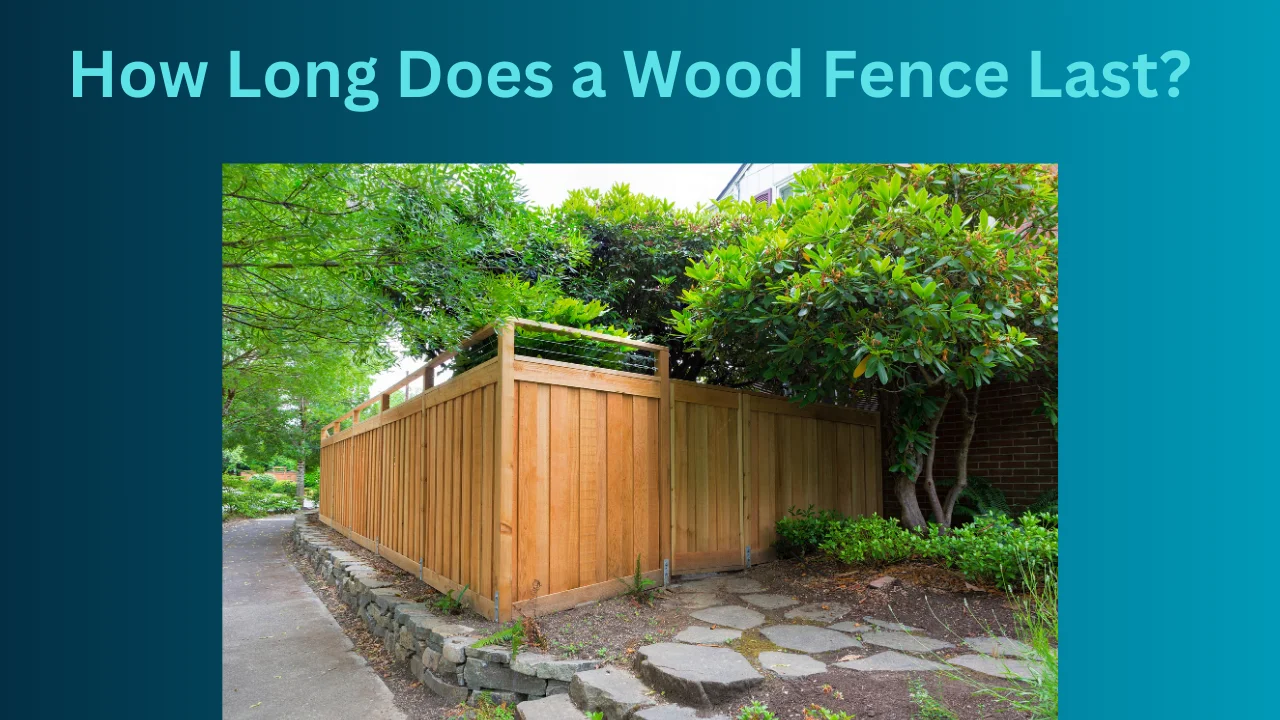When looking for a fence that will add visual appeal, privacy, and security to their property, many homeowners choose for wood. Wooden fences are a beautiful choice for homes because of their natural beauty and adaptability to different styles. The question of how long does a wood fence last? and what variables affect that duration is common among homeowners, both current and potential.
Understanding the Wood Fence Life Expectancy
The amount of care and attention given to a wood fence, the quality of its installation, the weather, and other environmental factors all play a role in determining how long it will last. A wooden fence, provided it is well-kept, can survive for fifteen to twenty years. Some woods, like cedar, are notoriously long-lasting and, given the right circumstances, can endure for generations.
Factors Affecting Wood Fence Longevity
Type of Wood Used
The longevity of a fence is greatly affected by the wood that is chosen. Cedar and spruce are softwoods that are naturally pest and decay resistant, so they are commonly used. In example, cedar is highly prized for its longevity and, with regular care, can reach the very top of the expected lifespan range.
Quality of Installation
The installation quality of a wood fence has a major impact on its lifespan. If the fence is not properly installed, it may not last as long or be as functional as it could have been. Improper installation can cause degradation to occur sooner rather than later.
Environmental Impact
The amount of time a wood fence lasts is highly dependent on the local climate. Decay and damage can be accelerated by conditions such as high humidity, extreme temperatures, and excessive rainfall. If you want your wood fence to last in an extreme climate, you might have to treat and repair it more often.
Maintenance Routine
To keep a wood fence looking great for a long time, regular maintenance is key. Things like staining, applying a waterproof sealant, and fixing damage quickly are all part of this. The visual attractiveness and longevity of a fence are both enhanced by regular maintenance.
Cedar Fence Durability
One of the most popular fence woods among homeowners is cedar because of its long lifespan and resistance to decay. Cedar may be the perfect material for your fence if you take the time to learn about its unique benefits.
Natural Resistance to Rot and Pests
Cedar has an inherent resistance to the common problems that can reduce the lifespan of a wooden fence: decay, rot, and pest infestation. Because of its resilience, cedar is a great wood to use in places where pests are common or where bad weather is common.
Longevity and Aesthetic Appeal
Cedar fences not only look great for a longer period of time, but they also last longer. An investment in a cedar fence will be well-rewarded because, with regular maintenance, it will retain its beauty and durability for years to come.
Special Care Requirements
Cedar requires less upkeep than other woods, but it still looks better after a while. You can bring out the wood’s inherent qualities and make it last longer by doing things like cleaning, staining, or sealing it.
Maintenance of Wooden Fences
Keeping up with routine maintenance is essential if you want your wood fence to last a long time and look great. Owners of fences should think about the following essential maintenance tasks:
Regular Cleaning
Preventing material breakdown and maintaining the wood’s integrity can be achieved by keeping the fence clean from dirt, mold, and mildew. You can get good results with a mild power washer wash or a soap and water solution.
Prompt Repairs
Fixing small problems as soon as they arise saves money in the long run. To keep the fence in good repair and extend its life, it is essential to fix any sagging boards, secure any loose hardware, and check that it is stable.
Staining and Sealing
The wood can be protected from the harmful effects of moisture and ultraviolet light by applying a high-quality stain or sealant. You can greatly increase the fence’s lifespan by reapplying stain or sealant at regular intervals.
Checking for Pests
Preventing extensive damage requires routine inspections for indicators of pest infestation, such as termites. In the early stages of an infestation, you can treat the wood or seek advice from a pest control expert.
Environmental Impact on Wood Fences
To get the most out of your wood fence, you need to know how various weather conditions impact them. Here are important things to think about:
Impact of Climate on Wood Fence Lifespan
A wood fence’s lifespan is highly dependent on the local climate. The rate of deterioration can be accelerated by adverse weather conditions such as heavy rainfall, high humidity, and extremely cold temperatures.
Exposure to Sunlight
Wood can dry out, deteriorate, and crack when left out in the sun for too long. Structural deterioration due to exposure to ultraviolet radiation can occur over time.
Effects of Moisture and Rain
Wood fences are particularly vulnerable to the damaging effects of moisture. Mold, mildew, and rot can develop on fences left exposed to rain for too long, destroying their structural integrity and aesthetic value.
Dealing with Wind and Storm Damage
Fencing can be physically damaged by storms and high winds, leading to breakage or misalignment. You can lessen the impact of these factors by inspecting and strengthening the fence on a regular basis.
Best Wood for Long-Lasting Fences
If you want your fence to last, it’s crucial to choose the right wood. A few top choices are these:
Cedar
For a fence that will last for years to come, cedar is the way to go because of its natural resistance to decay and insects.
Redwood
While redwood may be pricier than some alternatives, it is worth the extra money for its natural oils, which make it resistant to moisture and decay.
Pressure-Treated Pine
Pine is an economical and long-lasting option because it is resistant to rot and insects after being pressure-treated with preservatives.
Tropical Hardwoods
The dense and oily nature of woods like teak and ipe makes them very resistant to weather, rot, and pests; however, their price tag reflects this.
Wood Fence Treatment Options
Choosing the right treatment options is key to making your wood fence last longer and look better. I’ll tell you what to do:
Choosing the Right Sealant
You can prevent water and sun damage to your wood fence by using the right sealant. You can choose between tinted sealants, which add color and increased protection, and clear sealants, which give a more natural appearance.
Paint vs. Stain
Wood fences are typically better protected from water by staining rather than painting because the stain goes deeper into the wood, bringing out its natural grain while also providing better protection.
Using Water Repellents
Applying a water repellent to wood can decrease its ability to absorb moisture, which in turn helps to avoid warping and rot.
Rot Preventive Treatments
Treating your fence with rot-prevention chemicals can greatly increase its lifespan, especially in damp regions.
Frequently Asked Questions
What is the best type of wood for a long-lasting fence?
Cedar and redwood are top choices due to their natural durability and resistance to decay and pests.
How often should I treat or seal my wood fence?
It is advisable to treat or seal your wood fence every 2-3 years, depending on the climate and wood type.
Does the climate affect the lifespan of a wood fence?
Yes, extreme weather conditions like humidity, rain, and intense sun can significantly affect the lifespan of a wood fence.
How can I protect my wood fence from rot and pests?
Regular maintenance, using the correct sealants, and periodic treatments for rot and pests can protect your fence effectively.
What are the maintenance requirements for a cedar wood fence?
Cedar fences require periodic cleaning, staining or sealing, and checks for any potential pest infestations to maintain their condition.
Conclusion
A wood fence’s durability is highly conditional on its installation, the surrounding environment, and the level of care it gets. How long does a wood fence last? A beautiful and sturdy wood fence can be yours for many years to come if you choose durable woods like cedar or redwood, maintain them regularly, and fix any problems quickly. You can keep your investment in a wood fence—which adds value and privacy to your property—secure and beautiful by learning about its unique requirements and then actively working to fulfill them.

Shannon Reyes is a seasoned writer with a knack for crafting engaging blogs on a variety of service industries, including plumbing, cleansing, moving, pest control, and roofing. With a keen eye for detail and a passion for helping readers navigate complex topics, Shannon brings her expertise to life through informative and accessible content.











